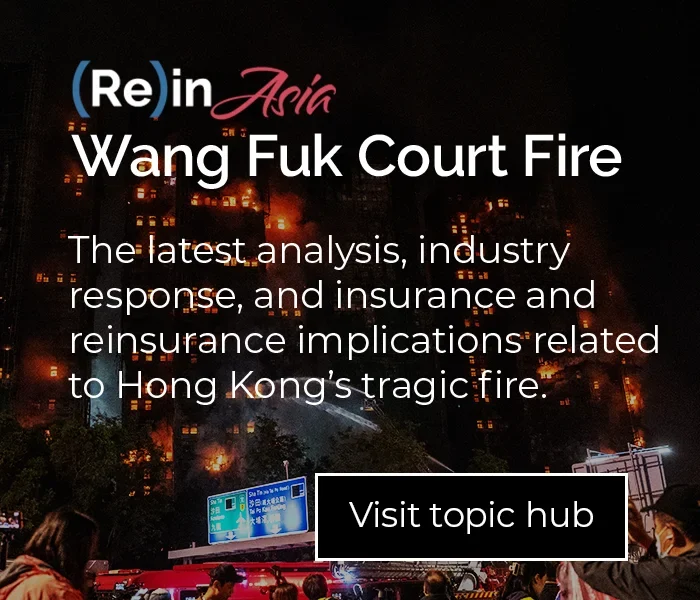
Virginia Shaw
Senior Risk Consultant-Property at AXA XLAXA XL Singapore leads the property programme for one of Southeast Asia’s leading fast-moving consumer goods (FMCG) legacy companies. Thus, our property risk consultants are well-acquainted with its facilities, including research labs, production operations, and warehouse/distribution centres. As one of the oldest FMCG companies within the region, many of these facilities have been operational for decades. The company is also investing in new facilities to maintain its competitive position in an area experiencing rapid economic growth.
My risk consulting colleagues and I, along with senior leaders from APAC and Europe, recently engaged with the company’s corporate risk manager for an open discussion centred on three critical topics: prioritising recommendations, effectively utilising risk consulting services, and maximising the value of open, collaborative partnerships.
Pragmatism is key
This client operates in a sector characterised by intense competition and low margins and tightly controls its operating costs, including those for risk management. Nonetheless, its risk exposures are significant, unsurprising given the nature of its operations and where they are located. As a result, our risk consultants typically recommend numerous measures the company could take to minimise potential threats.
However, since its budgets are constrained, this company often has to grapple with which initiatives to pursue now, which to postpone for later, and which not to implement. As this corporate risk manager put it, prioritisation decisions are all about being “pragmatic.”
“We start with the low-hanging fruit—the aspects that won’t incur significant costs. Unless there is a compelling necessity, our business leaders are unlikely to support recommendations that involve considerable expenses, such as upgrades requiring extensive renovations to the building and potentially prolonged periods offline. In a low-margin industry like ours, there must be some balance. There is no point asking for the sky because you won’t get it.”
However, he observed that the calculus shifts when designing a new facility. He said, “It’s easier to implement changes in a new factory. Modifying something in an existing operation is far more challenging and costly.” That is why he stressed the importance of incorporating insurance/risk management considerations and involving his insurance and broker partners when planning a new facility or a significant upgrade to an existing one.
Virginia Shaw
Senior Risk Consultant-Property at AXA XLAlong with focusing on the “low-hanging fruit,” he indicated that his company is most interested in the “one or two key recommendations that will move the needle.” In this regard, he distinguished between, in his words, “engineers” and “consultants.” He believed that the former tended to come equipped with a laundry list of 15 to 20 detailed recommendations, while the latter addressed a few, albeit significant, issues, usually in more general terms.
This thought-provoking perspective prompted a discussion about whether it is better to be thorough, i.e., an engineer, or pragmatic, i.e., a consultant. The consensus among my colleagues was that, as insurers, we are obligated to consider the full spectrum of risks a company faces while, as our client suggested, “putting yourself in the client’s shoes.” In other words, while we shouldn’t overlook specific opportunities for reducing risk, we must also be mindful of the client’s resources and capabilities.
Maximising the value of risk consulting
This risk manager also emphasised that a strategic approach is necessary for companies with constrained budgets to maximise the benefits of risk consulting. Whether concentrating on minimising fire hazards, enhancing supply chain resilience, or ensuring regulatory compliance, clearly defined objectives allow our risk consultants to address the client’s most pertinent challenges while maintaining a realistic perspective on what can be achieved.
A key takeaway from the meeting was that clear objectives and a realistic perspective are fostered through open, transparent discussions between the client and the insurer’s risk consultants. These conversations facilitate mutual understanding, promote better risk management outcomes, and strengthen the partnership between the company and its insurers. As this risk manager put it,
“If you have a partner who has a good overview of all of the assets, they can see gaps in some of the systems, say, in Thailand or another country. Those discussions are valuable in helping us see where we may have an issue and how we can mitigate it. And maybe even change how we operate.”
Such open, collaborative relationships can help clients adapt their risk management strategies proactively rather than reactively. These relationships can also be strengthened by capitalising on new risk assessment tools AXA XL has developed to quantify the likelihood and severity of various threats. Moreover, the tools’ graphical displays make it easy for different stakeholders to understand and prioritise the potential implications and remedies, such as alternative risk financing options or adjustments to supply chains.
This risk manager also highlighted two dimensions influencing his desired strategic approach: understanding how the company’s senior leaders view risk and an appreciation for the appropriate balance between investments in legacy operations and those in new facilities or markets.
At his company, he remarked that the senior leaders “take risks seriously.” He continued,
“Our chairman says, ‘You must help me reduce my sleepless nights!’ We discuss the risk of not meeting our carbon targets all the time. How do we achieve our net-zero emissions targets in five years? Insurance is just part of that. We consider it along with other parts of the business.”
My colleagues and I observed that he is fortunate in this respect; not all multinational companies share a similar appreciation for the value of enterprise risk management in building resilience in today’s volatile world.
When determining how to allocate limited resources between legacy operations and new facilities or markets, this risk manager stressed that, like other companies in the FMCG sector, responding to rapidly changing consumer habits is essential. “We must stay ahead of the game to keep up.” In practical terms, when new equipment or processes are implemented in one location, “we try to standardise that wherever possible.” He also noted how our extensive understanding of their operations in different countries can facilitate this while exposing them to best practices gained from our work with other companies.
Virginia Shaw
Senior Risk Consultant-Property at AXA XLNothing happens
Our discussion with this risk manager highlighted one of the ongoing dilemmas associated with risk consulting services, referred to by some as the “prevention paradox.” Specifically, the advantages of preventive action often remain invisible; when successful, nothing happens. In contrast, the response to an unfortunate incident ideally produces clear, dramatic outcomes. In other words, actions taken to avert disasters generally go unnoticed, while efficient and effective actions in the aftermath of a loss receive credit and praise. (Undoubtedly, poorly managed incidents can impose a severe toll.)
Of course, the issue of prevention versus response is not simply an either-or scenario; it encompasses both. Companies that wish to remain viable and competitive in today’s unpredictable business environment recognise that neglecting prudent measures to reduce the likelihood of, and the impacts from, a harmful event is not a sustainable strategy. Furthermore, they acknowledge the necessity of transferring some risks while maintaining disaster response and business continuity plans, particularly for reasonably anticipated incidents.
This, in turn, underscores the value of maintaining an ongoing dialogue with our risk consultants. Offering thorough and pragmatic guidance on where and how to prevent unfortunate events can be critical in navigating the turbulence, even if the outcomes are invisible.













